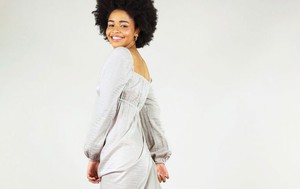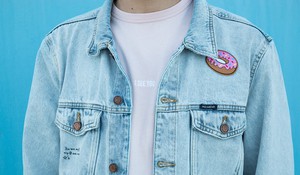- Clothes
- Bags
- Accessories
-
Inspiration
- Shoes
Is Second-Hand Clothing Sustainable? The Truth Behind It
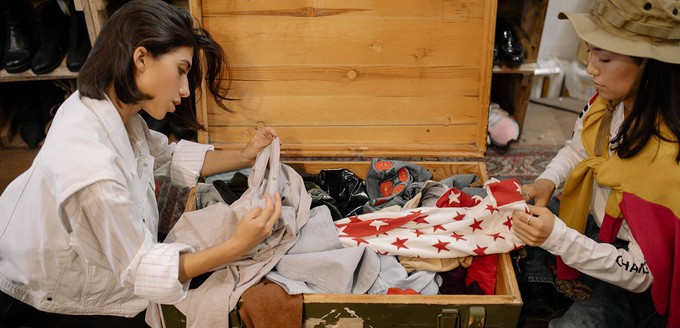
There used to be a silly stigma around it, but millennials and Gen Z have turned #thrifting into a cool statement and activity. In fact, the second-hand clothing market is predicted to become twice the size of fast fashion by 2030!
Great news for the planet, right?
Not necessarily, unfortunately. So, is second-hand clothing sustainable or not?
The sustainable benefits of buying second-hand clothing
Well, it is still better than buying new fast fashion pieces.
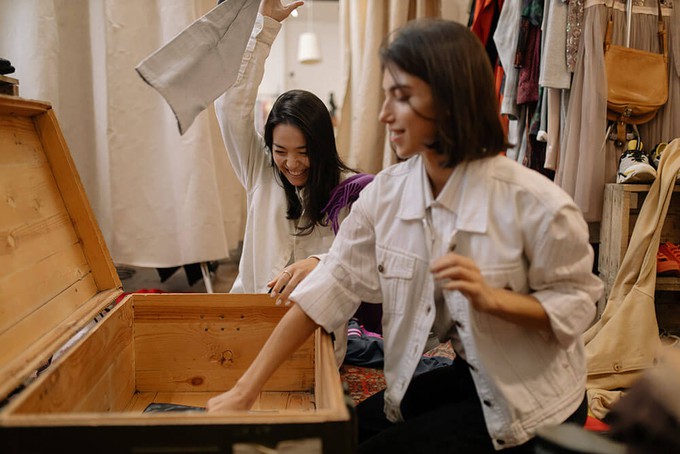
1. Buying second-hand clothes bypasses the production stage
Sourcing materials and producing the actual clothes are the most polluting parts of a fashion supply chain.
And, with this industry being responsible for 8-10% of all carbon emissions, that’s definitely good news.
2. It also reduces waste
18.6 million tonnes of clothing are sent to landfills or incinerated every year. Depending on what materials they’re made of, they can even take centuries to decompose.
So, buying second-hand clothing prolongs the lifespan of these garments.
The negative environmental and ethical impact of buying second-hand clothing
So far, you might be thinking “second-hand clothes = good, new clothes = bad”.
However, it’s not that simple.
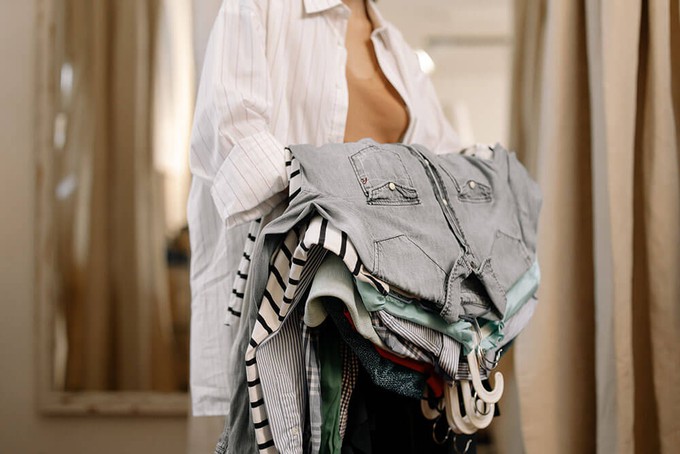
1. Second-hand stores hide a long supply chain
Ever wondered how those second-hand clothes got there?
- Only 20% of donated garments are actually sold in thrift and second-hand stores!
- Quite a lot of them are discarded and binned straight-away (= waste)
- Most donated garments are then sent for sorting to faraway countries like Pakistan (= more carbon emissions)
- These sorters then send them to at least another middle-man company in Europe (= more carbon emissions)...
- …which then sells them to thrift and second-hand stores (= more carbon emissions)
Basically, second-hand clothing isn’t that sustainable because it’s travelled too much.
2. It’s not a transparent industry
While there are a few second-hand clothing shops sticking to locally collected garments,
it’s impossible to trace their actual journey in most cases.
This is bad from an ethical point of view, too: we don’t know whether those clothing sorters and traders were guaranteed fair wages and safe working conditions.
3. Buying second-hand clothing is not a solution to overconsumption
With #ThriftHaul being used over half a million times on Instagram (and counting), it’s clear that too many people have simply replaced their fast fashion addiction with second-hand clothing.
Plus, many consumers buy it from platforms like Depop or Vinted… but this ‘second-hand clothing’ is often just fast fashion garments that have only been worn a couple of times!
4. It doesn't promote system change
Because buying too many second-hand clothes is still
- supporting fast fashion (albeit indirectly)
- fuelling a dangerous and polluting mindset of overconsumption
it doesn’t encourage fashion companies to become more sustainable.
In fact, it makes things even harder for ethical brands that promote quality and durability over quantity.
And these are the brands that are investing in new eco-friendly solutions and materials, paying their workers fair wages, and supporting charities.
How to shop second-hand clothing more responsibly
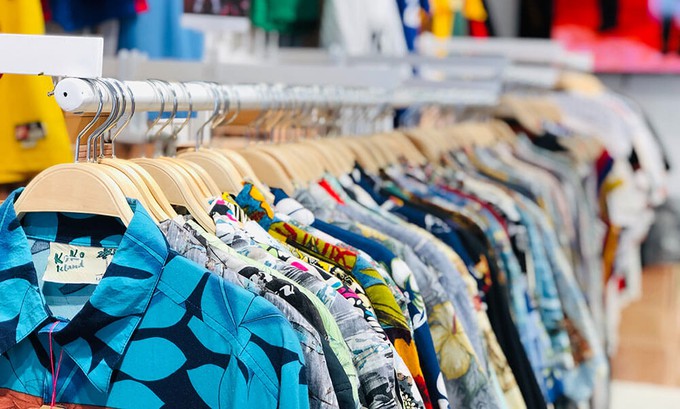
- Prioritise charity shops and thrift stores that source their garments locally or are transparent about their supply chains
- Avoid unsustainable hauls! Only buy garments you can see yourself wearing at least 30 times
- Choose sustainable materials, and try and avoid synthetic options that release microplastics when washed
- Buy second-hand clothing from sustainable brands. More and more of them are encouraging their customers to send their clothing back!
- If your budget allows it, support ethical brands, too: this will help them change the industry for the better
So, is buying used clothes sustainable?
While it does offer some eco-friendly advantages, buying used clothes is not sustainable per se because it still presents several environmental and ethical problems.
How you approach it, however, makes a huge difference.
Found this helpful? Start receiving our tips and inspiration to make more ethical fashion choices.
Share our story
Related articles
Beginner’s Guide to Sustainable Fashion: Here’s Wear to Start
What’s the problem with fast fashion? What are ethical clothes? And where do I even START? Our beginner’s guide to sustainable fashion covers all that for you.
Vintage Sustainable Fashion? Why Retro Isn’t Always Ethical
Is vintage sustainable fashion a given? While second-hand retro clothing comes with several perks, there are a few ethical concerns, too. Here’s why.
How to Take Care of Your Clothes to Make Them Last Longer
Tired of faded or damaged garments? Learning how to take care of your clothes can really make the difference for your wardrobe and wallet as well as the planet. Here’s how!
Project Cece is a platform that collects ethical fashion from vetted brands and shops in one place. Browse ethical fashion for women and men and find items that fit your style, budget and values!
